Star is a huge, hot, shining ball of burning gases in space that produces a tremendous amount of light and other forms of energy. The Sun is a star, and it supplies Earth with light and heat energy. The stars look like twinkling points of light except for the sun. So are they really a point? No. The stars that we see in the night sky look like a point because they are very far away from us, millions of light years away. In fact the nearest star to us is the sun itself, which is about 149 million km or 93 million miles away from us.
Stars come in many sizes. The sun's radius is about 432,000 miles across. But astronomers classify sun as a medium sized star because other stars are much bigger than the sun. Some stars are known as red supergiants which are about a 1000 times bigger than the sun. The smallest stars are neutron stars. They are about 6 - 7 miles across in radius. But they are a 1000 times hotter than the sun. The surface temperature of the neutron stars may be twice as hot as the sun's core.
Why do stars twinkle? Stars are way far from our planet, Earth. The light that comes from them is a very little amount. And about 70% of the light is reflected back into space by the atmosphere. The 30% of it refracts through air (refractive index of vacuum - 1.000; refractive index of air - 1.003) So with this refraction and also because of the disturbance in the ever moving wind, the ray of light bends and breaks making it to look like its twinkling.
Stars are basically made up of Hydrogen(H) and Helium(He) much like our own sun.These elements are very close to each other. Thus the atoms of hydrogen and helium keep colliding with each other forming new elements and atoms. This process is called Nuclear Fusion reaction. This releases a huge amount of energy as heat and light. 2 atoms of Hydrogen fuse together to form a Helium atom. The fusion of just two atoms liberates around 1kilo Joules(kJ). That is why the sun appears to be red.
Classification of stars: For the convenience of study of stars, they were classified into groups. This classification is called stellar classification.
1) Spectral class: This type of classification deals with the state and description of ionization of its chromosphere with atomic excitations. The light coming in as photons are diverted into prisms to to obtain a spectrum. The spectral lines are thus formed showing certain type of ion.These ions show a particular chemical element. By interpreting these, scientists can tell what type of star it is.
2)Temperature: In the beginning stars were classified according to their temperature. Their temperature showed the colour of the stars They were as follows.
Red - cool(4000 - 6000 K)
Orange - warm(6000 - 8000 K)
Yellow - hot(8000 - 12000 K)
White - very hot(12000 - 16000 K)
Blue-White - too hot(16000 - 20000 K)
Blue - Super hot( >20000 K)
This classification was discarded because of some reasons but still used sometimes.
Now Stars are classified as O, B, A, F, G, K and M. Conventionally, to remember this, it is made into a sentence - Oh!!, Be A Fine Guy/Girl, Kiss Me.
Like the previous way, these are also according to temperature.
O - Blue:
B - Blue - White:
A - White:
F - Yellow - White:
G - Yellow:
K - Orange:
M - Red:
(source for the table - Wikipedia)
The sun that we see is a Orange star, which means its a cool star.
Yet another star classification has been made according to their sizes. This type of classification is called as
Yerkes Stellar classification.
1)Black dwarf:
2)White dwarfs:
3) Sub-dwarfs:
4)Dwarfs:
5)Sub-Giants:

6)Giants:

7)Bright-Giants:

8)Supergiants :
9)Hypergiants:
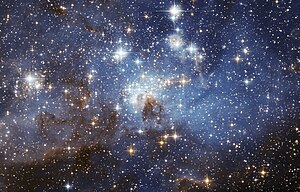 |
| A region where a star is forming |
Stars come in many sizes. The sun's radius is about 432,000 miles across. But astronomers classify sun as a medium sized star because other stars are much bigger than the sun. Some stars are known as red supergiants which are about a 1000 times bigger than the sun. The smallest stars are neutron stars. They are about 6 - 7 miles across in radius. But they are a 1000 times hotter than the sun. The surface temperature of the neutron stars may be twice as hot as the sun's core.
| Neutron Star |
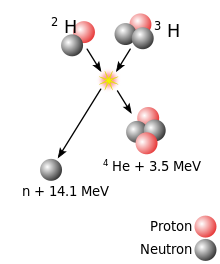 |
| Nuclear Fusion |
Classification of stars: For the convenience of study of stars, they were classified into groups. This classification is called stellar classification.
1) Spectral class: This type of classification deals with the state and description of ionization of its chromosphere with atomic excitations. The light coming in as photons are diverted into prisms to to obtain a spectrum. The spectral lines are thus formed showing certain type of ion.These ions show a particular chemical element. By interpreting these, scientists can tell what type of star it is.
2)Temperature: In the beginning stars were classified according to their temperature. Their temperature showed the colour of the stars They were as follows.
Red - cool(4000 - 6000 K)
Orange - warm(6000 - 8000 K)
Yellow - hot(8000 - 12000 K)
White - very hot(12000 - 16000 K)
Blue-White - too hot(16000 - 20000 K)
Blue - Super hot( >20000 K)
This classification was discarded because of some reasons but still used sometimes.
Now Stars are classified as O, B, A, F, G, K and M. Conventionally, to remember this, it is made into a sentence - Oh!!, Be A Fine Guy/Girl, Kiss Me.
Like the previous way, these are also according to temperature.
O - Blue:
B - Blue - White:
A - White:
 |
| Class A compared with the Sun |
 |
| Class F(Polaris) |
G - Yellow:
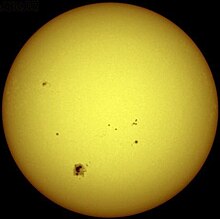 |
| Class G |
K - Orange:
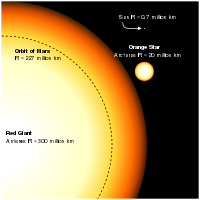 |
| Class K |
M - Red:
.jpg/220px-Betelgeuse_star_(Hubble).jpg) |
| Class M |
| Class | Temperature[8] (kelvins) | Conventional color | Apparent color[9][10][11] | Mass[8] (solar masses) | Radius[8] (solar radii) | Luminosity[8] (bolometric) | Hydrogen lines | Fraction of all main sequence stars[12] |
|---|---|---|---|---|---|---|---|---|
| O | ≥ 33,000 K | blue | blue | ≥ 16 M☉ | ≥ 6.6 R☉ | ≥ 30,000 L☉ | Weak | ~0.00003% |
| B | 10,000–33,000 K | blue to blue white | blue white | 2.1–16 M☉ | 1.8–6.6 R☉ | 25–30,000L☉ | Medium | 0.13% |
| A | 7,500–10,000 K | white | white to blue white | 1.4–2.1 M☉ | 1.4–1.8 R☉ | 5–25 L☉ | Strong | 0.6% |
| F | 6,000–7,500 K | yellowish white | white | 1.04–1.4 M☉ | 1.15–1.4R☉ | 1.5–5 L☉ | Medium | 3% |
| G | 5,200–6,000 K | yellow | yellowish white | 0.8–1.04 M☉ | 0.96–1.15R☉ | 0.6–1.5 L☉ | Weak | 7.6% |
| K | 3,700–5,200 K | orange | yellow orange | 0.45–0.8 M☉ | 0.7–0.96R☉ | 0.08–0.6 L☉ | Very weak | 12.1% |
| M | ≤ 3,700 K | red | orange red | ≤ 0.45 M☉ | ≤ 0.7 R☉ | ≤ 0.08 L☉ | Very weak | 76.45% |
The sun that we see is a Orange star, which means its a cool star.
Yet another star classification has been made according to their sizes. This type of classification is called as
Yerkes Stellar classification.
1)Black dwarf:
2)White dwarfs:
A White Dwarf
|
3) Sub-dwarfs:
 |
| A Sub-Dwarf star in the center of a nebula |
4)Dwarfs:
 |
5)Sub-Giants:

6)Giants:

7)Bright-Giants:

8)Supergiants :
 |
9)Hypergiants:
Hypergiant
|









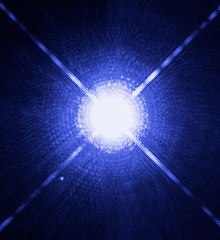




0 comments:
Post a Comment